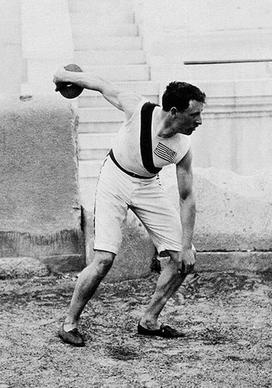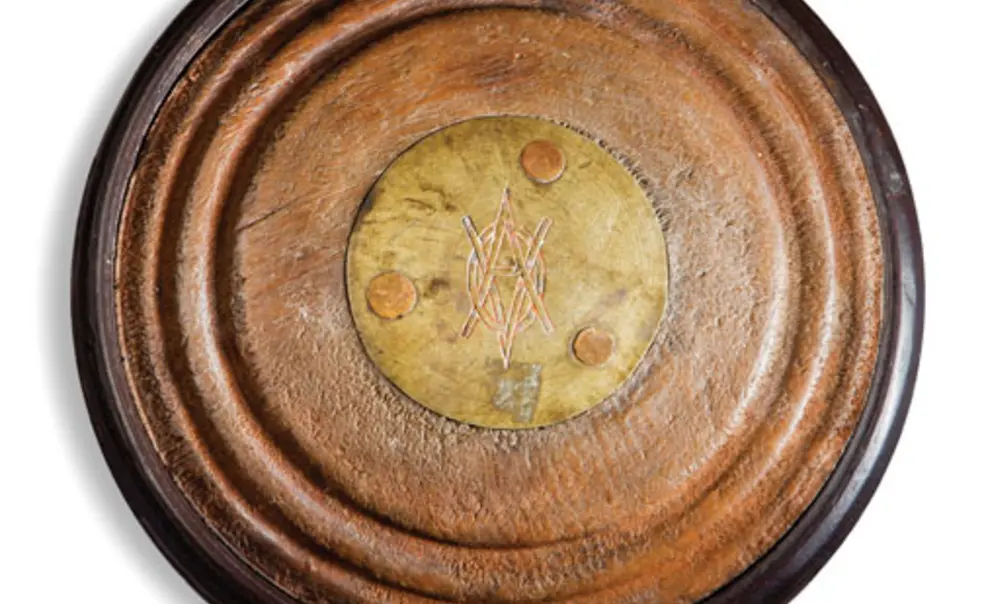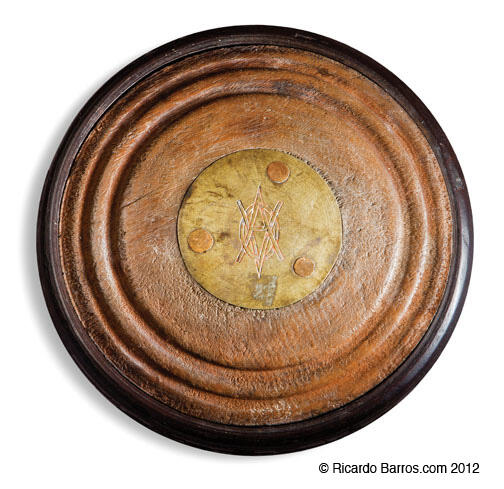From Princeton’s vault: Tigers helped give us the Olympics

What: Hurling this discus on opening day of the 1896 Summer Olympics in Athens – known as the I Olympiad – Robert Garrett 1897 astonished the world by beating the Greek champion. Success of the underdog American was crucial in fanning transatlantic interest in the revived Olympic Games ... still going strong as the XXX Olympiad gets under way July 27 in London.
Some thought it zany to bring back the Olympics, extinct for 1,500 years. A chief American proponent was Princeton history professor William Sloane, who encouraged four students – track team members and friends from Tiger Inn – to participate. Garrett’s mother, a member of the banking family that owned the Baltimore and Ohio Railroad, funded the trip, which lasted weeks.
Another small group from Boston made up the remainder of this first U.S. Olympic team, a far cry from the 600 or so Americans competing this summer in London.
Garrett first laid eyes on a discus – oak with an iron rim – when he stepped into the restored ancient stadium in Athens on the day of his event. His mighty throw of 96 feet was enough to humiliate the Greek champion of “magnificent physique” — but only two-fifths of today’s world record.
Where: Princeton Memorabilia, Princeton University Archives













1 Response
Ben Primer
9 Years AgoMore on Garrett’s discus
I wanted to add a bit to the story on the discus Robert Garrett 1897 threw at the first Olympics in 1896 (Campus Notebook, July 11). At some point Garrett had lent the discus to Joseph Edward Raycroft (who was chairman of health and physical education at Princeton from 1911 to 1936) for his library, which was located in the old gymnasium and which burned to the ground in 1944. Fortunately, Raycroft was able to tell Garrett that the discus was not in the gym at the time of the fire, awaiting a case that was being fabricated; see: http://findingaids.princeton.edu/getEad?eadid=AC146
I wanted to make sure that the discus in the photo was the one Garrett threw (which in fact it is). In a letter to Raycroft, Garrett reported he had two discuses: “When you receive them, you can readily understand that the damaged one was lying on the ground at the stadium when we Princeton youngsters visited it the afternoon of the Sunday before the games. I experimented with it a few times and then determined to take part in the event just of the fun of it. The other undamaged discus was the one used in the games. Immediately after the games were held, the Greek authorities had a monogram placed on one of the brass plates and presented the discus to me. This monogram, I presume, can be deciphered by the aforementioned Greek scholars a Princeton.”
These were placed, along with a framed diploma, in the new library room in Dillon. When they moved to Mudd, I do not know. In 1996, upon the occasion of the centennial of the modern Olympics, I learned when I was University that one of the discuses was on display at the Olympics museum in Geneva. I asked that it be returned. In fact, the museum had been displaying the damaged discus, not the one Garrett actually threw.